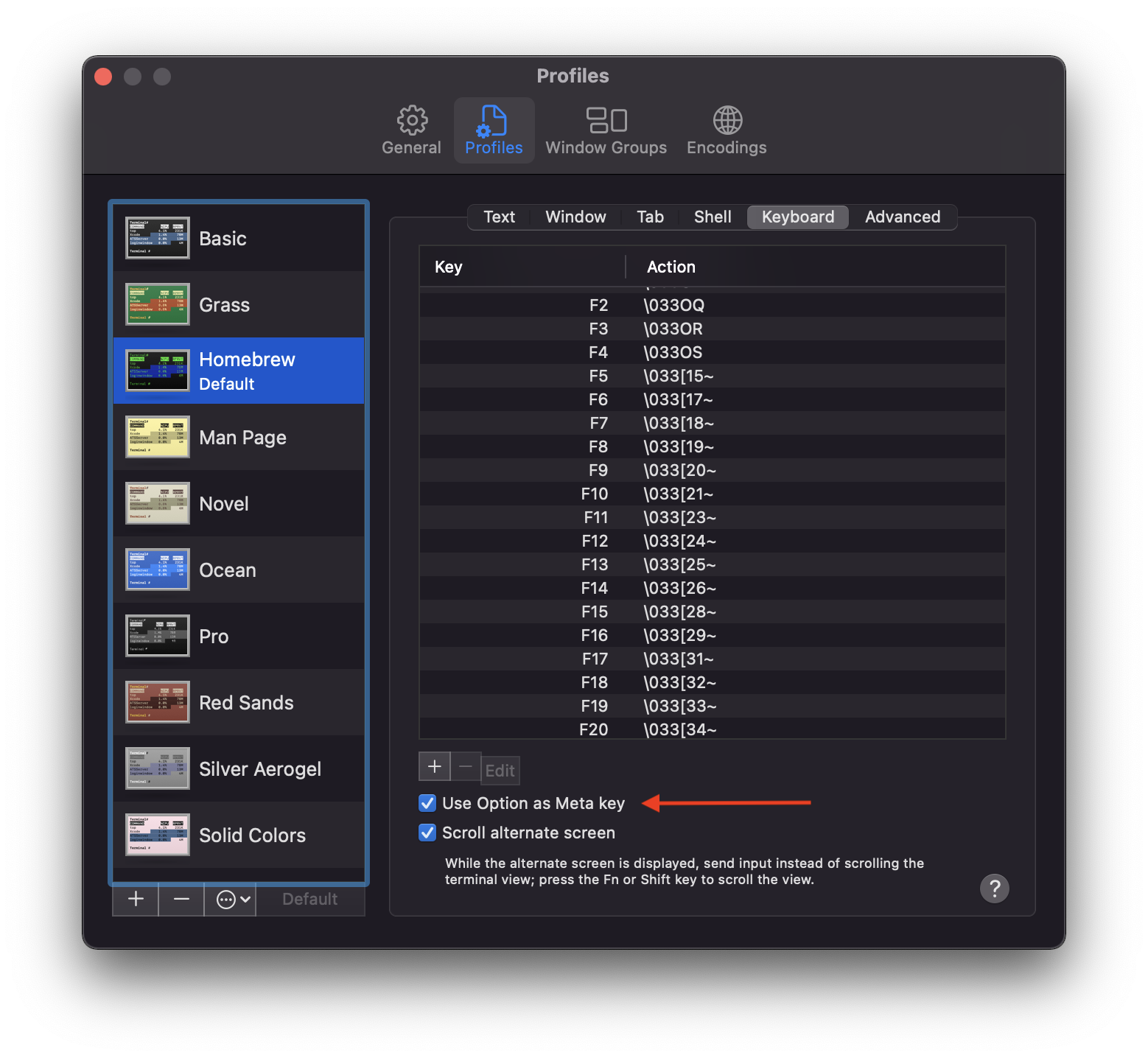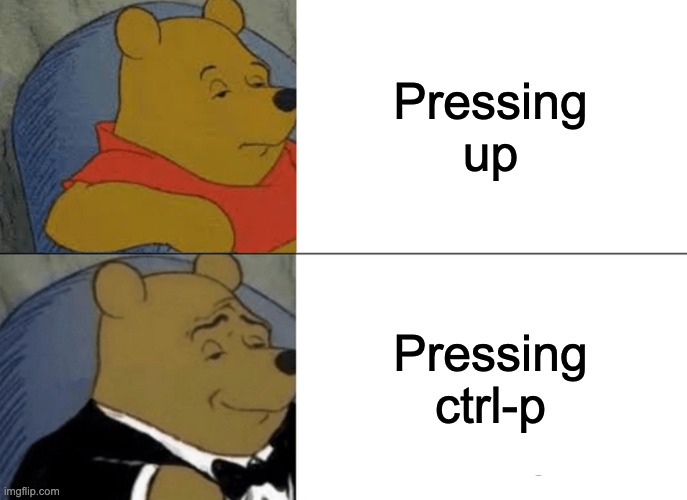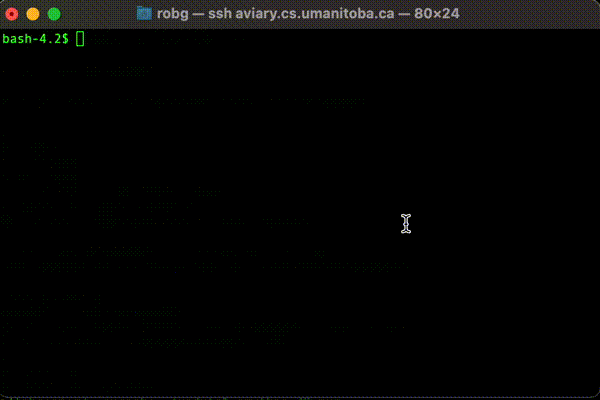How to shell, 101
An introduction to using a command-line shell. Doesn’t need to cover every command (or … maybe that’s 1 lecture).
Learning outcomes
After doing this unit, students should be able to…
- Use a shell quickly
- Tab completion
- searching for previous command
- understand what a $PATH is
- add more paths to the $PATH in a .profile
- traverse a filesystem (move around a filesystem), find and execute files.
- know how to search previous commands (or, at least know it’s possible, and know that it is probably available in their shell of choice)
- understand a unix programs inputs and outputs.
The Shell
Really, a REPL environment for the bash (or whichever shell program you are
using). It keeps the same concepts: you have a current state and can run
any command to modify that state.
The most important part of the state is where you are on the filesystem.
Generally, you start in your home folder (aka ~) which is usually in the
folder /home/<your user name>, or shared machines, you might be in something
like /home/student/<your user name>. This is your space! But, you’ll want to
keep it tidy!
Moving around
cd is your friend, here. ‘Change Directory’ - so, move to a different
‘folder’ - though the usual UNIX lingo is “file” and “directory”.
We can use relative paths from our current position, or an absolute path from the root of the file system.
Magic shell directories
.this directory..previous directory.../..to move back directories (which you can) keep doing!~home folder
We can use ese any time
We can also use ~username to move to a user’s home folder
cd ~robg
or
pelican.cs.umanitoba.ca 136% ls ~robg/demo/
1010 1012 1020 2140 2160
Relative paths
Remember, the shell is all about state. So, we are in a directory… which?
Use pwd Present Working Directory to figure that out.
Say we have the following:
pelican.cs.umanitoba.ca 123% pwd
/home/cs/staff/robg/demo
pelican.cs.umanitoba.ca 125% ls
1010 1012 1020 2140 2160
pelican.cs.umanitoba.ca 124% tree
.
├── 1010
│ └── syllabus.txt
├── 1012
│ └── syllabus.txt
├── 1020
│ └── syllabus.txt
├── 2140
│ └── syllabus.txt
└── 2160
└── syllabus.txt
5 directories, 5 files
From the pwd command, we can see we are in /home/cs/staff/robg/demo,
and from the ls and tree command (which shows all the files and folders
in a neat tree format) that there are 5 directories, each with a folder in it.
We could move into 1012 by just using cd 1012, since we’re in the demo
directory. Then, using relative paths, going back one .. and then into 2140,
by cd ../2140:
pelican.cs.umanitoba.ca 126% cd 1012/
pelican.cs.umanitoba.ca 127% cd ../2140
Absolute paths
Absolute paths, or fully-qualified paths use a full directory path and a file name to find a single non-ambiguous file.
First thing to know about UNIX-like operating systems is that it’s a tree (and everyone in CS loves trees).
The ‘root’ of the file system is the / directory.
pelican.cs.umanitoba.ca 128% cd /
pelican.cs.umanitoba.ca 129% ls
1 diag lhome misc nvidia-modeset.ko.xz run usr
bin etc lib mnt nvidia-uvm.ko.xz sbin var
boot home lib64 net opt srv
data home.EL7 lost+found nvidia-drm.ko.xz proc sys
dev import media nvidia.ko.xz root tmp
We can then build paths off that. We can get to the same files as the relative path demo:
pelican.cs.umanitoba.ca 130% cat /home/cs/staff/robg/demo/1012/syllabus.txt
Mixing them?
Yes, we can do this… no we shouldn’t.
Literally, There and Back Again… going to the demo folder, and back to
the root /… and back again:
pelican.cs.umanitoba.ca 133% ls /home/cs/staff/robg/demo/1012/../../../../../../home/cs/staff/robg/demo/
Creating files and directories
Eventually, we want to fill this file system. We’ll discuss moving in remote files somewhere else, here we focus in just making them.
Making directories
We can make directories fairly easily:
mkdir someFolder
Which uses the permissions mask for the default permissions of the folder.
If you want to make a entire string of folders:
mkdir -p look/at/me/im/folder/rick
Creating files
Editing files in a terminal is a larger discussion, but to just create a file:
touch thisFile
touch is a funny program that reset the last edit date of a file…
ie, you touched it. But, it also creates the file if it does not exist.
touch is legitimately useful if you want a makefile to ‘see’ a change in a
file.
Repeating commands
Easy! Mash that up button.

Sure, that works. But it’s not smart.
There’s a whole suite of things we can do with the history, but I’ll highlight the really useful ones here.
The gnu page uses C for ‘ctrl’ and M for ‘meta’. Meta key is ‘alt’ for Windows, and configurable on macs - often set to the ‘option’ key.

You should, to be a fancy person, stay on the home row. Up and down are for scrubs.

Use ctrl-p, ctrl-n instead.
Then… we can ‘modify’ this behavior with the meta key to use what we’ve typed as a keyword search.
Try this: start typing a command you’ve typed before (think a long gcc
command
that you really should have made a makefile for…) and press alt-and-p
(opt-and-p if you’re on an Mac). Now, it only brings up relevant searches!
Use this! This is maybe the most useful thing you can learn to go fast!
Completing commands
The easiest way to move fast is to use tab to complete a command for you.
Consider starting to type a long command like ssh-keygen:

One tab press fills (if it can), double tab press shows you the options you can fill with.
You can use tab to find commands, or local files, or folders.

Where are commands found?
Tab completion finds executables… but where?
Try:
echo $PATH
These are the directories where executables are search for
when you press tab, or when you type a simple command like ls.
What’s with the $?, that shows that this is a variable, more on
this later!
The directories are searched in order. If there are two ls commands,
the one in the directory that is earlier in the list will be found.
You can verify… which… command will be run by using which.
$ which ls
/usr/bin/ls
Arguments
Arguments are space delimited, and provided after the command’s name. Commands are always one ‘word’ long.
Consider ls, that is one ‘word’ long, and shows the files and
directories in the current working directory.
But, we can pass it arguments of directories to list, as a space- delimited list:
$ ls /usr /var
/usr:
bin games lib libexec lost+found share tmp
etc include lib64 local sbin src
/var:
account crash empty gopher local lost+found opt spool var
adm cvs games kerberos lock mail preserve target www
cache db gdm lib log nis run tmp yp
The rest of the line after the first space are passed to the program as arguments. The way the program reacts to your arguments is covered in the man page, and varies from program-to-program.
The arguments are passed to the program as a string, or may be handed to the program as a list of strings.
Quick reference
Commands you’ll totally forget
ls- list the directoriescd folder_name- move into directoryfolder_name.cd ..to move back one folderpwd- present working directory, where am I?